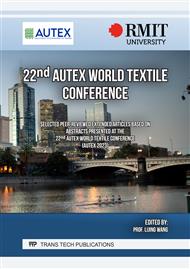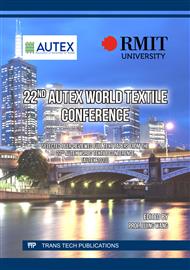p.3
p.15
p.23
p.33
p.39
p.49
p.61
p.67
Ecological Approaches in Yarn Dyeing
Abstract:
In today's globalized world, rapid depletion of natural resources, increased air and water pollution, deforestation and climate change are major environmental problems for industrial activities. Many industrial activities contribute to environmental pollution by causing these problems. Therefore, it is of great importance to develop environmentally friendly production methods, reduce resource consumption and minimize environmental impacts. The yarn dyeing industry is a sector where natural resources are used intensively and environmental pollution problems are seen. Innovations in this sector aim to make production methods more sustainable. In particular, process reduction is an important step in reducing resource consumption and minimizing environmental impacts. This provides an important opportunity to conserve natural resources and produce environmentally friendly products. Therefore, with the increasing demand for ecological products, it is aimed to develop an environmentally friendly, sustainable and environmentally sensitive process in yarn dyeing. With the new process developed within the scope of the project, a dyeing study was carried out using the natural color of raw cotton yarn. The first bath pre-treatment we apply to raw cotton yarn allows us to make homogeneous dyeing. Thus, it was possible to reduce the need for some chemicals and natural resources that are harmful to nature. The new process developed within the scope of the project is gaining importance in the textile industry due to limited natural resources and increasing environmental problems. The aim of the project is to reduce the use of water, energy and chemicals by eliminating the bleaching step used in traditional yarn dyeing processes and to create an environmentally friendly product platform. In this way, with the increasing demand for ecological and sustainable products, customer expectations can be met and the company's environmental impact can be reduced. In addition, this new process, which saves energy and water, offers the opportunity to gain a competitive advantage by providing cost savings in the textile industry. Therefore, the new process developed sets an example for other businesses in the sector, benefiting both the environment and the operation of the company.
Info:
Periodical:
Pages:
15-22
Citation:
Online since:
March 2024
Authors:
Keywords:
Price:
Сopyright:
© 2024 Trans Tech Publications Ltd. All Rights Reserved
Share:
Citation:



